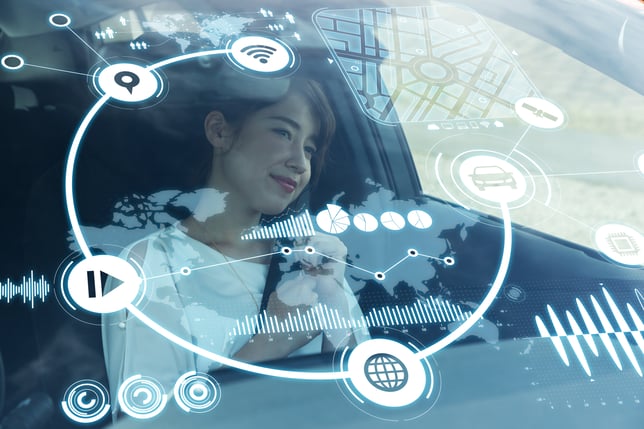Self-driving cars are arguably one of the most disruptive technological leaps ever done by human kind. And because of such a drastic change in the way we commute, behave and live our lives, it is impossible not to question whether we will actually adapt to it or not. Sanford Russell, Senior Director of Autonomous Driving Ecosystems, North America NVIDIA, and Lex Fridman, Ph.D. and MIT Researcher, believe that even though it is a big leap, we will not just adapt, we will enjoy it. However, there are a few points automotive manufacturers need to understand to help the trusting relationship between human and car to be fully, and happily, embraced by all:

COMMUNICATION IS KEY
Companies will always aim to create a good and open relationship between their customers. But with the advent of autonomous vehicles, drivers not only need to trust the company, they need to trust the car and the AI technology. A red light flashing to take control of the vehicle will not be enough for the driver to trust the machine. So how do you build that trust? Communication.
Companies need to build into the vehicles a system that effectively communicates what the car sees and relays that to the driver. We want to know if the car is seeing the same bicycle, person, or bus coming in front of us. We want to make sure the car sees that red light coming up. The more the car communicates empathically with the human driver, the better will be the relationship and adaptability of people with the next generation of vehicles. And that communication starts now.
From now on, it is going to be less about the taillights and more about the relational interactions between people and technology: humans and their cars having one shared model of viewing the world. Human beings see the world in a very rich colorful canvas, with a wide range of sensorial experiences - sight, hearing, smell, taste, and touch...while cars see the world based on radars, ultrasonic sensors, and video cameras. The results of worldview differences are extensive, and challenging to reconcile. But with the natural understanding of driver state monitoring that Emotion AI brings to the table in the automotive industry - such as eye direction, focus recognition, gaze estimation, drowsiness detection, and even weird lookings - only enhance the positive perceptual relationship that is being built between people and autonomous vehicle.
With constant communication and trust, we will form a relationship to a degree where we start to understand the limits of technology just by knowing how the cars see the world.
GOOD NEWS FOR THE NEXT GENERATION
Today’s younger generation will be the drivers of the future, and they have it easier than the current drivers. Acceptance is often difficult when new technologies are introduced. But today’s teenagers already have most of this technology in their phones and computers: they were born into it, and they have no idea how the world spun without it before. Moreover, with the next generation of self-driving cars, they will be as much drivers as they are passengers - and they already are passengers now. The next generation of drivers will definitely be more comfortable with the changes of “operating” a fully autonomous vehicle than the current generation is.
Interested in learning more about the importance of driver state monitoring? Affectiva recently hosted Bryan Reimer, Ph.D., Research Scientist in the MIT AgeLab and the Associate Director of The New England University Transportation Center at MIT. Dr. Reimer is an early thought leader on the future of travel who has been leading cutting edge research integrating advances of artificial intelligence with the foundations of human factors and psychology. His work is fueling innovation across automotive manufacturers, suppliers and governments. Dr. Reimer talked about key concepts in the human centered evolution of automated vehicles. He also covered how monitoring driver state needs to rapidly expanded in both today’s manually controlled vehicles and tomorrow automated systems, the challenges in doing this, and what are some of the other new technologies that will be critically important in autonomous vehicles. You can access the Future of Mobility Webcast recording here, “The Future of Mobility: Trends and Opportunities for the Next Generation of Vehicles."






